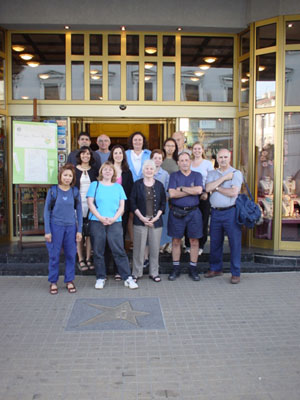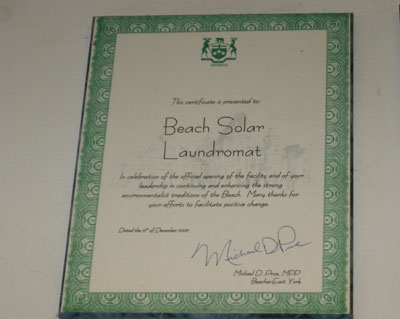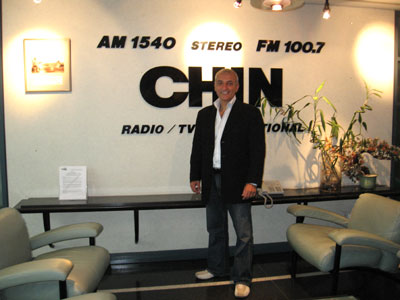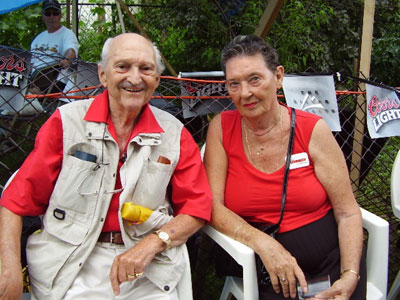My dentist, Dr. Rajiv Arya, and I have the most amazing conversations while he examines the precarious state of my molars. During my dental appointments he has been telling me about his interesting trips to Nepal and to South Africa, and he also mentioned a holocaust education trip he participated in a few years ago. He told me that two young women that were part of the trip did a documentary about it, and I knew then that I had to meet these two Toronto women.
A few weeks ago I met Esther and Li, two young local professionals, and I had an extended chat with them about their backgrounds and about their experience during this Holocaust education trip. We also discussed the making of their documentary “Those Who Lie Beneath” which they produced independently with great determination, effort and persistance.
I was also fortunate to be able to see a rough cut of their documentary, and it had a strong impact on me. Over the years I have seen many Holocaust documentaries, but what makes this one different is the unique perspective of 3 young Canadian women of Jewish, Chinese and German descent who all participated in the creation of this documentary. The documentary transcends religious affiliations and sends a powerful message to all of us, regardless of religion or background.
Here are Esther and Li, to talk about the story of the making of “Those Who Lie Beneath”:
1. Please tell us a bit about yourselves, what is your background, how did you get to know one another?
Esther: I grew up and was educated in Toronto. I have an undergraduate degree in Economics and a Law degree. I have worked as in-house counsel at a Canadian television production company for the last 5 years. I met Li when I began working at this company.
Li: I am Chinese-Canadian, but born in Laos. I came to Canada at the age of 2 and have lived in Montreal, Calgary and Toronto. I think having grown up in various cities across Canada, having to make new friends, and as well having to adapt to the differences in culture and society in each city has made me open to meeting different people and wanting to learn about their culture. So, in this sense, I was very open to learning about this part of Jewish history. As for meeting Esther, we met while working at a Toronto-based television production company about 5 years ago.

Tour Group
2. What were the reasons for each of you that made you decide to go on this trip and how did the idea of creating a documentary during this Holocaust education trip come about? What are your goals for this documentary?
Esther: I first heard about the anti-discrimination tour through friends and became interested in going on the trip purely as a participant when I attended an information session. I noted that the people at the session ranged in ages and came form various ethnic backgrounds. I immediately wondered why these people, none of whom were Jewish, were interested in spending their summer vacation visiting death camps.
The next day I mentioned the trip to my boss at work thinking perhaps the company may wish to make a documentary about the trip. My boss thought it was an interesting idea but to my surprise suggested that I take the reigns and make the documentary independently.
My background was not in film making so I approached Li to see if she would be interested in helping me make the documentary. She said yes and through our own limited resources and the goodwill of many, we made the documentary.
At the time of writing this, Li and I have completed a polished rough cut and will shortly be commencing the marketing of the documentary. We would like to enter our documentary into some festivals, obtain a television broadcast license and also get our documentary into the school system.
Li: Esther first mentioned to me that she was interested in going on an anti-discrimination tour to Germany and Poland, and that she would be going on a trip with participants who were of different cultural and religious backgrounds. Then she mentioned how she thought this would be a great documentary and asked if I would like to participate in the making of it. Since my background is in television production, I thought this was a great opportunity to put my training into practice.
Esther as well, got me questioning myself. At that time, the Holocaust was simply a page in the history books for me. I had no thoughts of it beyond what I had learned in school, and I had no emotional ties to it. Yes, I did know that 6 million Jews died in the Holocaust, but no, I really did not know what happened – the systematic murders of millions of Jews, the horrendous torture of so many people, that this was the worst hate crime that man has ever known. And so I realized that if I didn’t really know, and that if I could not really associate with such genocide or any others that have happened since, then that meant that so many others probably felt the same. And in the end, I wanted to make this documentary for my own self knowledge and betterment. I hope that the documentary will help touch those who are not directly affected by the Holocaust become affected by it like me.
3. Please tell us a bit about the preparations leading up to the trip.
Li: Well, when it became clear that we were going to do this documentary, I went on an obsessive research binge. I read anything I could get my hands on about the Holocaust because I felt inept on the subject. I became quite haunted by what I was reading and the images that I was seeing, but still I couldn’t get enough of it.
As for the actual documentary process, we originally had a director/cameraperson on board, but because of the lack of financial backing, he had to step aside. So, we went on a search for a camera person. After meeting with several individuals, we came upon Sandy, who, as it turned out, was a former classmate of mine at Ryerson. The timing couldn’t have been more perfect. At that time, she was teaching at Ryerson which meant that she had the summer off to come with us on the trip. As Sandy took care of the technical aspect, Esther and I had to make sure that we were ready to creatively and legally shoot in Germany and Poland. There needed to be, creatively, a focus on the documentary and legally, we needed to obtain permits from the sites we were visiting and releases from the individuals we were filming.
Just prior to the trip, we pre-interviewed many of the trip participants who lived in Toronto, not only for them to get used to the idea of having two cameras follow them around, but as well for us to get a sense of who they were and to find out why they were going.

Sculptures in Old Berlin Jewish neighbourhood
4. What was the overall itinerary for the trip? What was the makeup of the travel group?
Li: Our group met in Berlin, Germany. Our tour began there because the group leaders wanted us to get a sense of where it all started. We visited sites like the Topography of Terror, Wannsee, the Jewish Museum, Ravensbrueck Woman’s Camp. Then we were led into Poland, where we really got a sense of what happened during the Holocaust from visiting concentration camps like Majdenek and Treblinka.
As for the makeup of the group, it was extremely diverse in age, religion and culture. The age group ranged from early 20s to late 60s, from Catholics to Hindus, and from a German to a Jew. The diversity was what made this interesting.
5. What are your impressions of how people in Germany have been dealing with this era of history?
Esther: I had never been to Germany before and it was strange for me to be there, having seen so many Holocaust films that obviously portrayed Germany and Germans in a negative light. After meeting and speaking with our tour guide and the various individuals we met there, I learned that Holocaust education is strong in Germany and young Germans bare the shame of their grandparents’ past. For the most part, it seems that Germans do not deny the role their country played in the Holocaust. It’s black and white in the context of liability, no gray area as perhaps some Poles would argue.
6. Please comment on your next stops in Poland. What did you see and what were your impressions?
Esther: Without revealing too much of the documentary, let’s just say that unfortunately some of the negativity I held prior to going to Poland remains after visiting Poland. While we met some wonderful people there, we did see anti-Jewish graffiti on walls of buildings and our own group was on the receiving end of some anti-semitic remarks by some Polish teenagers, the irony being that except for me, members of our group were not even Jewish . Furthermore, I am not convinced that the average Pole acknowledges Poland’s role as perpetrator during the Holocaust. No doubt there were Poles who were simply bystanders and also Poles who tried and did assist Jews, but to deny that they were perpetrators also is to deny fact.
Li: From Berlin, we boarded a train headed towards Warsaw, Poland. This to many of us was quite an eerie way to travel there. Though our experience was not comparable to the victims of the Holocaust who were cattle carted into the trains, with no food, no water, and with no knowledge as to their final destination, we still were haunted by it.

Lodz graffiti




